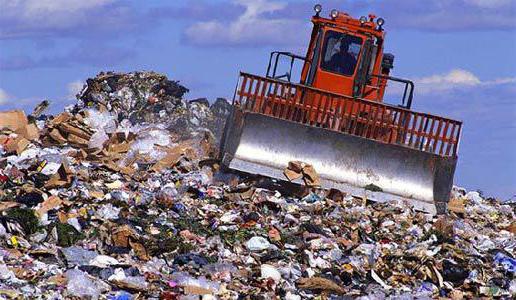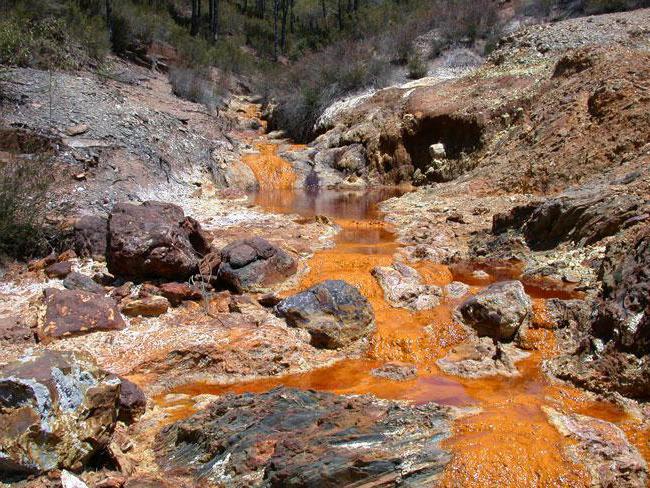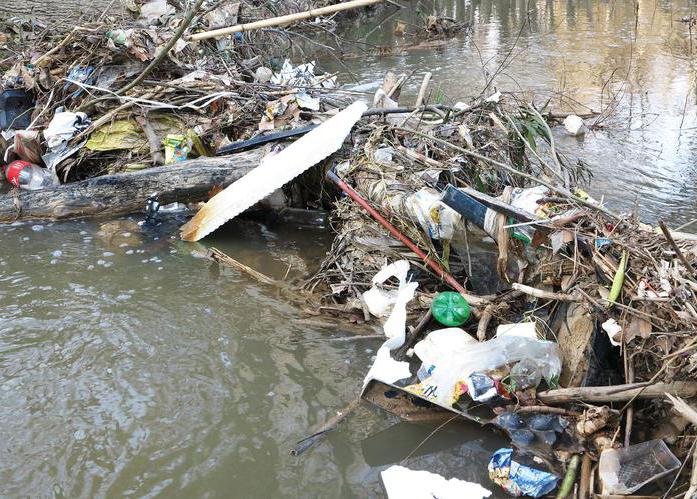The Federal Law "On Environmental Protection" concretizes the key provision of environmental legislation. It consists in the fact that an entity conducting business using natural resources must compensate for the harm that it causes to nature. 
OECD recommendations and their application in practice
The Organization for Economic Development and Cooperation in 1972 adopted a provision in accordance with which the above principle was established. According to the recommendations made, citizens and legal entities polluting the environment should bear the expenses aimed at carrying out the measures necessary to eliminate this harm or reduce it to the minimum acceptable levels. In Russia, this principle, however, has undergone certain changes.
Legal aspect
In practical and theoretical senses, it has not yet been established whether payment for a negative environmental impact acts as a tax. In some foreign countries, it is regulated by the Tax Code. The forms in which deductions are made to the Russian Federation are provided for in the Federal Law "On Environmental Protection" and a number of other legal acts. Along with this, legal documents establish the types of negative impact on nature. The types and procedure for determining pollution charges are also regulated by the following legal documents:
- Federal Law "On Waste".
- Government Decisions.
- Federal Law "On Air Protection".
- Instructions and guidelines approved by the Ministry of Natural Resources.
Legal nature
There are several approaches to its definition. They depend on the establishment of tax or non-tax content of this deduction. Payment for negative environmental impacts is considered as a fiscal fee, administrative fine, compensation, etc. At the same time, it is worth saying that the legal nature of the deduction has not been established by the higher courts. In accordance with the Tax Code, specific amounts are levied from business entities in order to fulfill their obligations. They arise from the conduct of specific activities by them, as a result of which nature is damaged. Such deductions constitute redress for tariffs regulated by the state. In essence, they have a compensatory character. Calculation of payment for the environment, therefore, should be carried out on the principle of equivalence in accordance with the type and extent of damage within acceptable parameters. Subjects thus gain the right to harm nature. 
Liable persons
Who pays for environmental pollution? The obligation to compensate for damage to nature is imputed only to those entities whose activities are directly related to its infliction. They are differentiated and individualized in accordance with the type and extent of damage, economic characteristics of individual national economic sectors, and environmental factors. Of no small importance in the classification will be the expenses of users on measures to prevent or reduce harm to nature. They are also counted as payment for negative environmental impact. To which budget are deductions made? As a general rule, in federal and regional.
findings
Based on the above characteristics, we can say that payment for environmental pollution is a prerequisite for business entities to obtain the right to carry out activities harmful to nature. It is defined as an individual-deductible deduction, established in accordance with differentiated indicators of permissible negative influence. Payment for environmental pollution provides compensation for damage and expenses for its restoration and protection. All this indicates that the deductions under consideration are devoid of a number of signs by which they can be attributed to tax collections.
Types of harm
The negative impact on nature should be called the impact of economic or other activities, the results of which lead to negative changes in the quality of the environment. In particular, we are talking about physical, biological, chemical and other indicators. In the Federal Law governing environmental protection, the following types of such influence are established:
- Disposal of consumption and production waste.
- Soil and subsoil pollution.
- The discharge of substances and microorganisms into water bodies. These include, among other things, underground sources and catchment areas.
- Air emissions of polluting and other compounds.

In the government decree, these types are duplicated, with the exception of negative impact on soil and subsoil, and additional types are established:
- Emission of polluting and other compounds into air from mobile and stationary sources.
- Noise, vibration, radiation and electromagnetic effects.
Accrual Features
The above Federal Law previously stated that the procedure in accordance with which the payment for negative environmental impact is determined and calculated is established by the legislation of the Russian Federation. Since December 2008, this issue has been assigned to the authority of the government. In accordance with this, Decree No. 632 of 08/28/1992 stipulates payment for emissions into the environment, waste disposal, and other types of negative impacts on nature within the limits of:
- Limits. They are temporarily established standards. Accrual is carried out by multiplying rates by the difference in limits and acceptable indicators. The latter may be the volume of waste, substances, levels of harmful effects. To determine the total amount, the results obtained by multiplying are added in accordance with the types of harm that are caused by the business entity.
- Permissible limit indicators. In case of non-exceeding the established standards, the fee for harmful effects on nature is calculated by multiplying the respective rates by the amount of pollution. Then the results are summarized.
Out of range
In this case, environmental pollution charges are calculated by multiplying the corresponding rates within the limits of the actual excess amount. The obtained indicators are summed up and multiplied by a five-fold increase in tariff. 
Environmental Policies
They are established for each element of the harmful substance, the type of negative impact, taking into account the degree of their danger to nature and public health. They are approved by the government in Decree No. 344. For some regions, as well as river basins, coefficients are set to the basic standards. They take into account environmental factors (the importance of socio-cultural and natural objects, climatic features of the area).
Odds
They are based on indicators of environmental degradation and pollution within the territories of the country's economic regions, corresponding to emissions into the air and generated and disposed waste. For the atmosphere, the following highest coefficients are established:
- For the Ural region - 2.
- For the North Caucasus and Central - 1.9.
The following indicators are established for soils:
- In the Central Black Earth Region - 2.
- In the Volga region and in the North Caucasus region - 1.9.

Coefficients of ecological significance and situation on water bodies for the basins of large rivers of Russia are calculated on the basis of information on the volumes of discharged effluents in the context of the territories, republics, regions and economic regions. For example, for p. Kuban established coefficients: 2 - for the Republic of Adygea and 2.2 - for the Krasnodar Territory. Additional indicator 2 is provided for territories assigned to specially protected areas. These include, among other things, health-improving areas and resorts, areas of the Far North, equivalent districts, the Baikal region and areas of environmental disaster. Differentiated rates are calculated by multiplying the basic ratios by factor factors. 
Additionally
A government decree regulating the procedure in accordance with which a fee and its maximum amount for environmental pollution, waste creation and disposal, as well as other types of negative impact on nature is established, provides for a reduction in the amount of mandatory contributions. The executive structures of the territories, republics, regions, cities of federal significance, autonomous entities with the participation of the territorial divisions of the Ministry of Natural Resources and Ecology form differentiated rates. When establishing them, approved basic standards and ratios are taken into account. In addition, these authorities are adjusting the size of user deductions. This takes into account the degree of development of funds for the implementation of environmental measures. These amounts are credited to the mandatory fee.
activity
Their list is established in instructive documents explaining the rules by which a fee for negative impact on the environment is charged. Measures aimed at preventing or reducing the negative impact on nature, in particular, include:
- The construction of local and head treatment facilities for enterprise effluents with a transportation system.
- Installation of gas-dust collecting units. They neutralize substances from gases that escape from ventilation air and technological structures before discharge.

- The construction of pilot industrial workshops and installations in which the development of filtration methods is carried out.
- Creation of automatic control systems, equipping with devices of stationary sources of emissions, as well as construction, purchase, equipment of laboratories.
- The construction of waste incineration and waste processing plants, landfills for industrial and household waste.
- Construction of production facilities, installations, workshops for processing recyclable materials and the release of new products from it.
Controversial moment
In accordance with sub. 6, paragraph 4 of the decree approving the procedure for determining payment and its maximum amount, the executive structures of the regions of the Russian Federation, cities of federal significance, as agreed with the territorial divisions of the Ministry of Natural Resources and the Federal Inspectorate for Supervision of Consumer Rights, may reduce payments or exempt certain enterprises financed from them means of the state budget, the organization of the socio-cultural sphere. The Supreme Court of the Republic of Tatarstan challenged this provision in the Constitutional Court of the Russian Federation regarding the possibility of removing from certain entities the established obligations for the deduction of environmental fees. According to the decision of the Constitutional Court, the specified normative act regulating the relationship between nature and society, among the principles calls compensation for use. This, in turn, suggests that a fee for negative environmental impact should be charged.The introduction of environmental fees, in view of the fact that it is necessary to compensate for the damage caused to nature by business entities, is mandatory for the established category of users.
